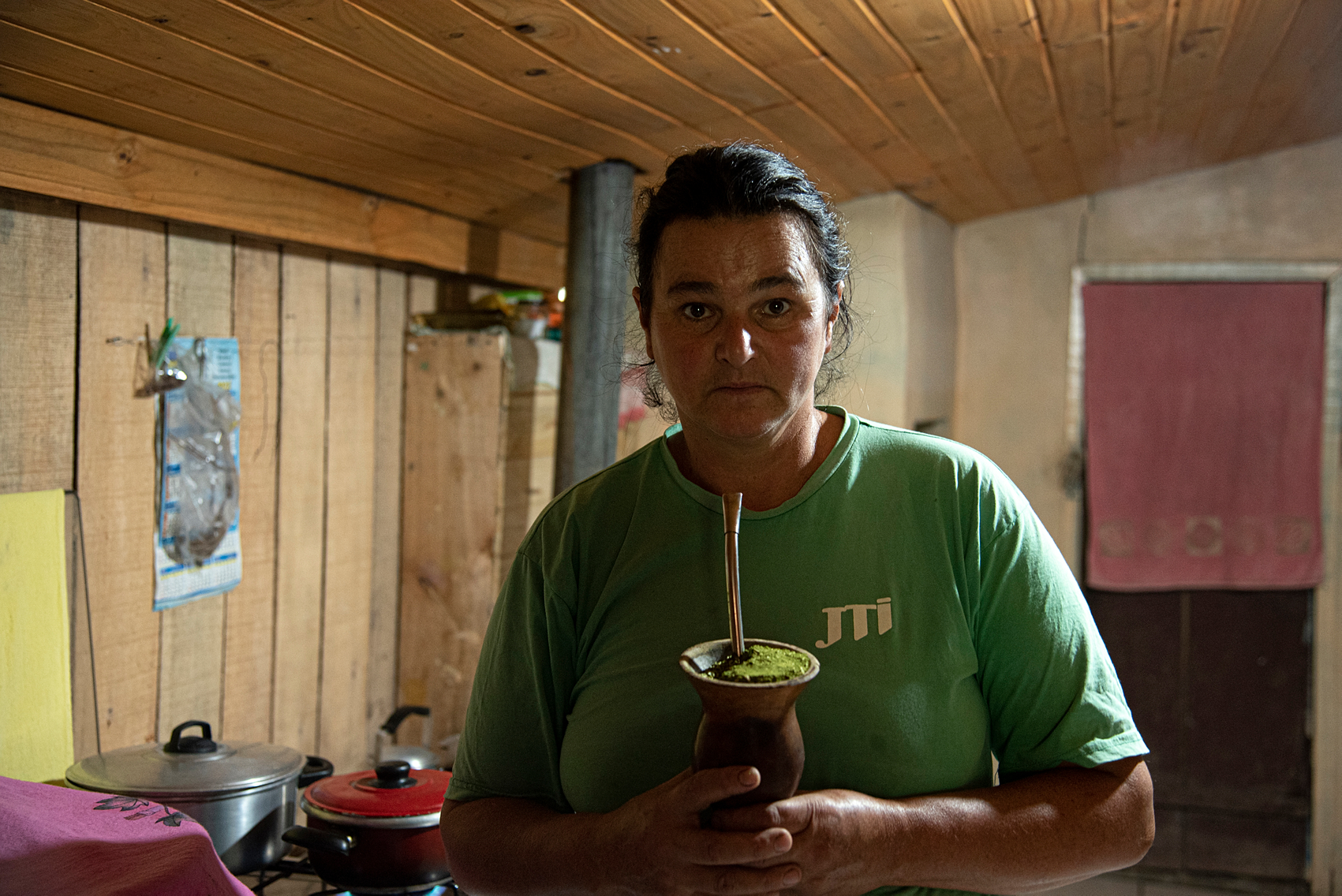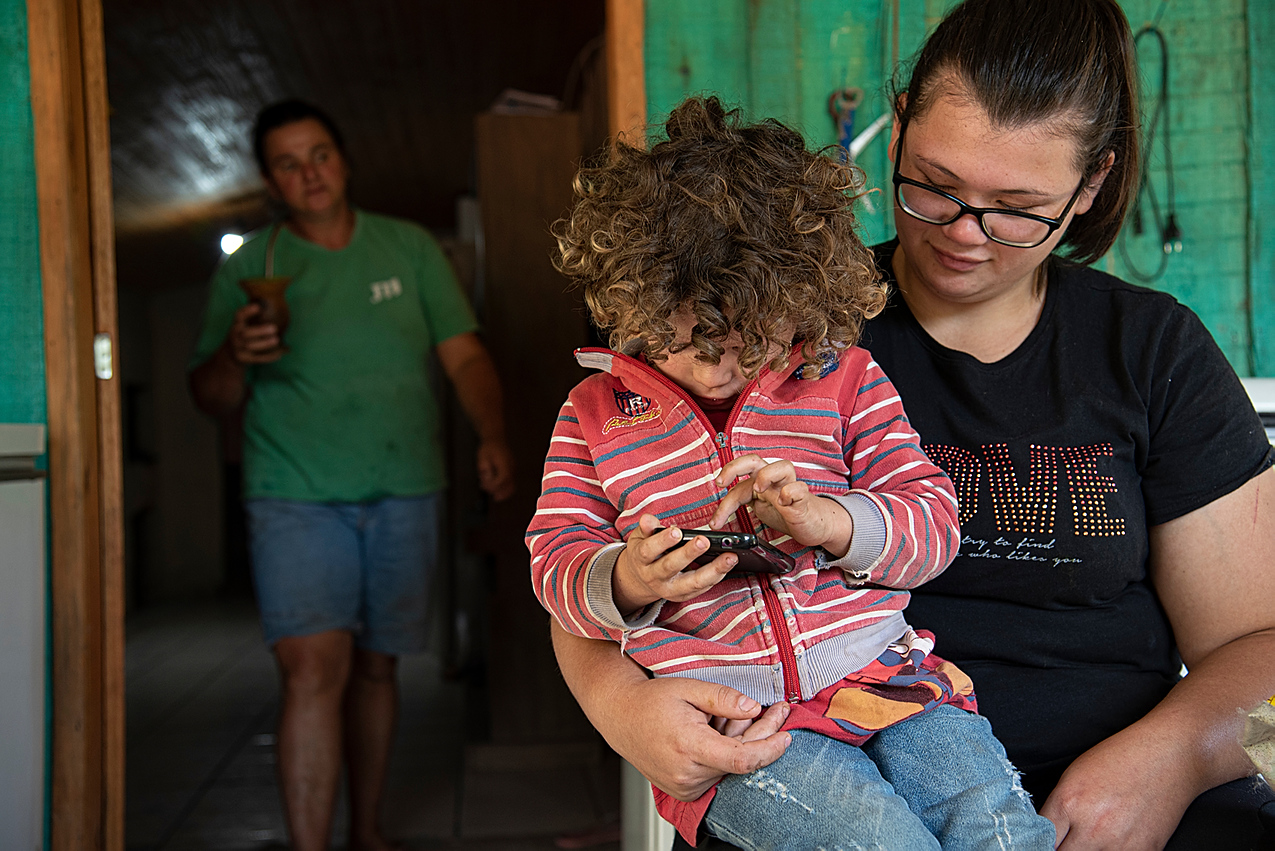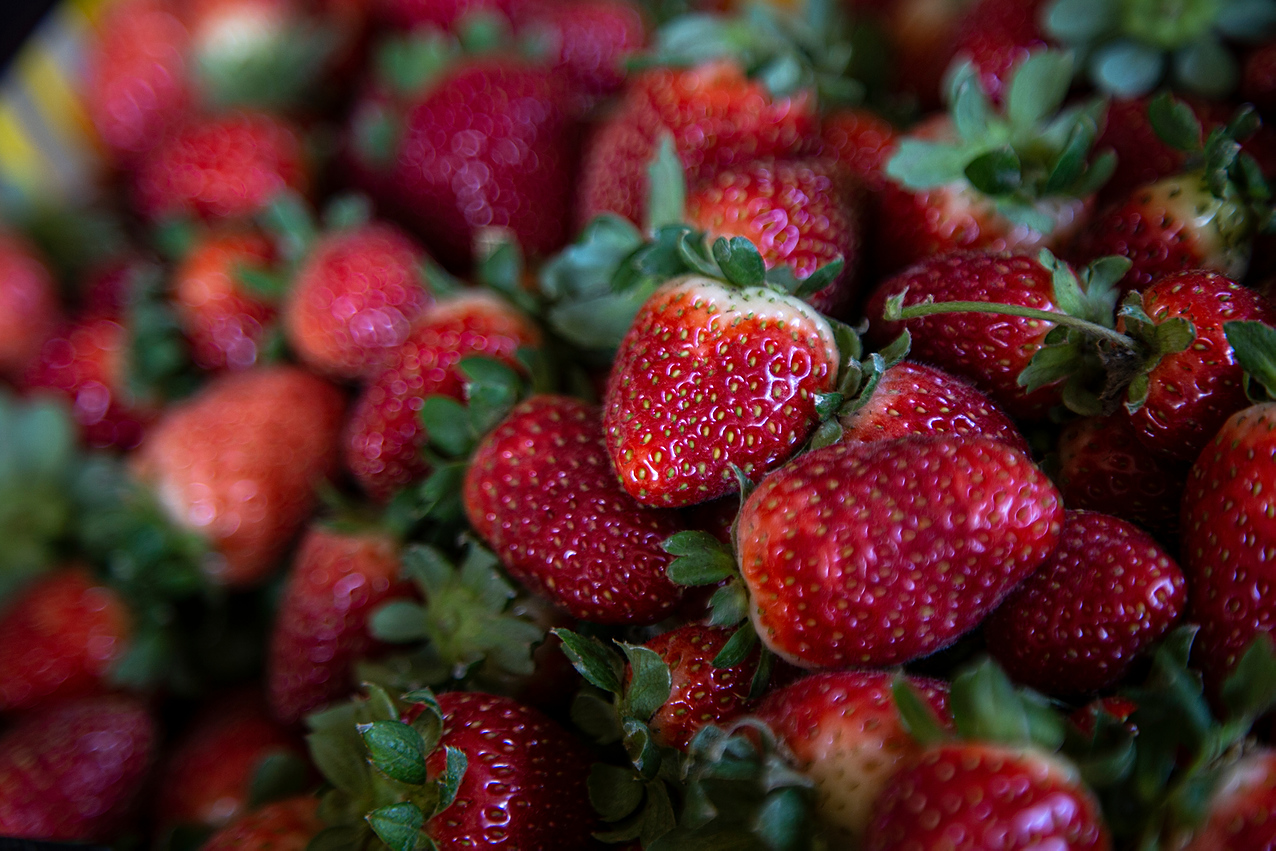
In a Brazilian region marked by tobacco growing, farmers find alternatives
By Raquel Gurgel | 6 July, 2023

Graziela in the strawberries greenhouse. Photo by Raquel Torres - CETAB/Fiocruz
Fabiana da Costa was just 34 years old when she heard from a doctor that she had to quit being a farmer if she still wanted to be able to walk. That's because growing tobacco – which she had done since her childhood – had given her a serious spine issue, and she was almost unable to get around anymore. “It’s a really physically demanding job,” says Graziela da Costa, her daughter. In fact, studies show that tobacco farming is a much more labor-intensive endeavor than non-tobacco farming.

Fabiana went through a long medical treatment and knew that, even after feeling better, she would need to stop growing tobacco. It wouldn’t be easy: both her family and that of her husband, Eri da Costa, had been doing that for decades, which is a quite common situation in rural areas of Rio Grande do Sul, the Brazilian state where they live. More than 95% of the tobacco leaves produced in Brazil come from the three states of the South region, and Rio Grande do Sul leads this production with more than 50,000 farmers involved. In Herveiras, Fabiana’s town, many farmers grew up believing that tobacco farming is the only activity they can earn money from. But in 2015, because of her spine, Fabiana began growing less strenuous crops: some vegetables for her family’s subsistence.
Graziela, then a teenager, soon became interested in farm diversification. And she got even more involved with that when she became a student at a Technical Agriculture High School and started selling vegetables at the local fair.
Today, at the age of 21, Graziela is the main driver of diversification on the family farm and, together with her mother, she grows various fruits and vegetables. They get nearly all the food they need from their own land. In addition to that, they sell their products to restaurants, individual consumers, and state schools.
Many tobacco growers in Brazil point out that an obstacle to migrating to other crops is the difficulty in marketing their products. This is why it is so important to have programs such as the National School Feeding Program (PNAE), a long-established Brazilian public policy that requires that at least 30% of the cost of state schools caterings must come from family farms. Through the PNAE, Graziela is able to supply local schools with fruits and vegetables – and these schools have become a ready market for part of the products.
In just a few years, the landscape on the family farm has changed a lot. Where there was basically only tobacco, now there are potatoes, cassava, beans, maize, vegetables in general, and various fruit trees, besides livestock. What consumers love the most are the strawberries: Graziela has managed to install a greenhouse to harvest these fruits all year round – and she sells them both fresh and frozen, as well as strawberry jams. People even started calling her “Grazi dos morangos” (“Grazi of the strawberries”, in a free translation).
Tobacco growing has not been completely abandoned on the farm, but today it is only carried out by Eri, Graziela's father – and it has shrunk from 110,000 to 50,000 tobacco plants per year.
Graziela expects that this number will keep on shrinking because tobacco requires a lot of manpower, which they do not have anymore. But she does not believe that, in the short term, it will fall to zero. “It's not only an economic issue but also a cultural one. My father has been a tobacco grower all his life and we need to respect it. But we have seen some changes. When we first began diversifying our crops, he believed that only tobacco could bring us income. However, little by little he became aware that it is possible to find viable alternatives. Today, we can see that our income has actually increased”, she says.
*
The information and views set out on this news are those of the author(s) and do not necessarily reflect the opinion of the Parties to the WHO Framework Convention on Tobacco Control (WHO FCTC), the Parties to the Protocol to Eliminate Illicit Trade in Tobacco Products, or the Secretariat of the WHO FCTC.





